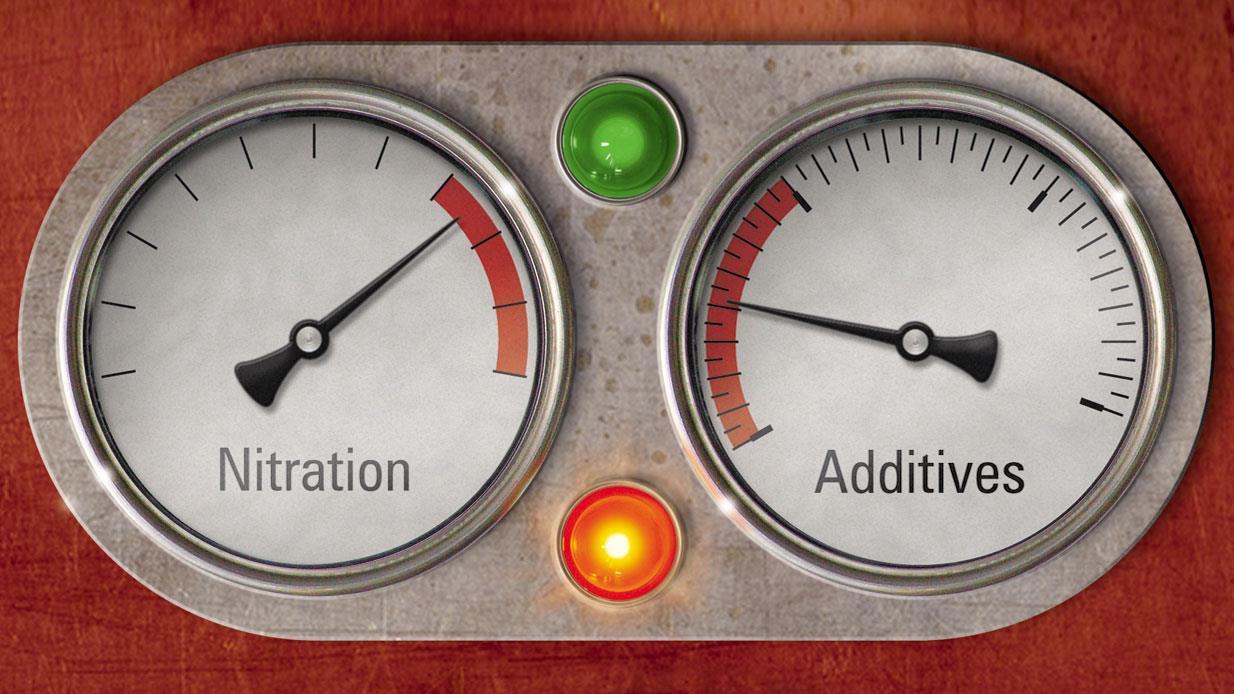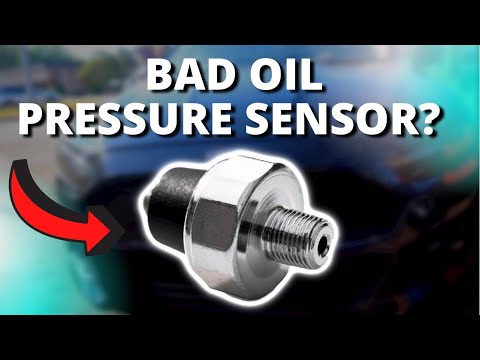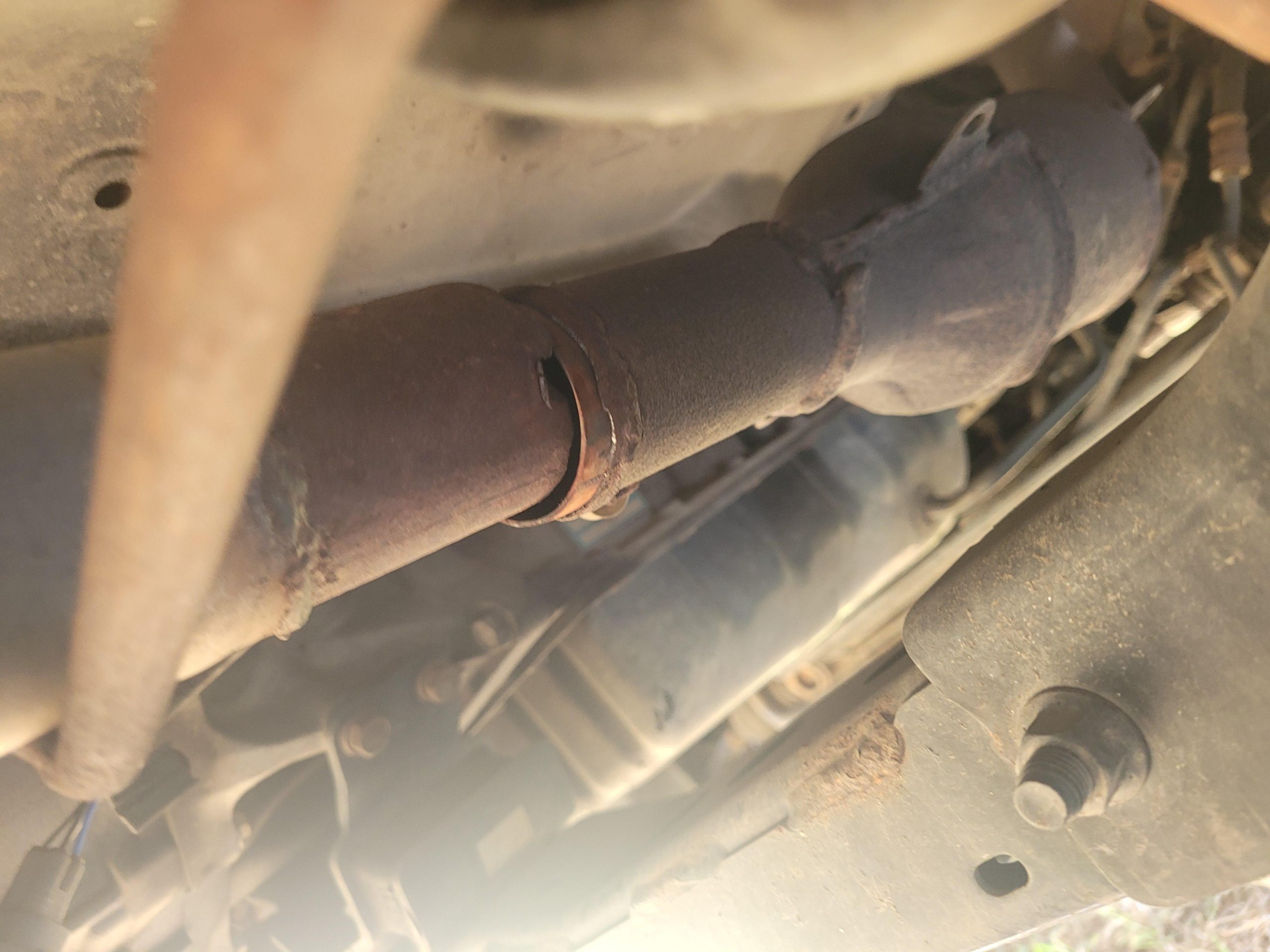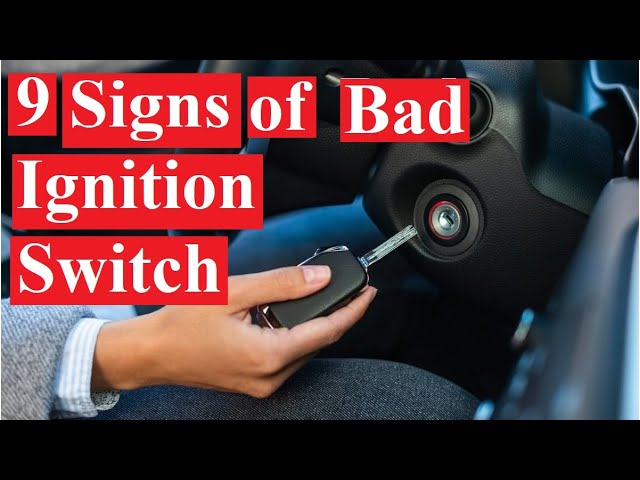Can a Bad Oil Pressure Sensor Cause Loss of Power
A bad oil pressure sensor can indirectly cause loss of power. The sensor’s faulty readings may cause the engine to run poorly.
Understanding the role of an oil pressure sensor is crucial for maintaining your vehicle’s performance. This sensor monitors the oil pressure inside the engine, ensuring the lubrication system works properly. Adequate oil pressure is vital for the smooth operation and longevity of an engine.
A malfunctioning sensor can send incorrect data to the car’s computer system, which may trigger a safety feature that reduces engine power to prevent damage. Quick and accurate detection of oil pressure issues helps prevent more significant engine problems. Car owners should address oil pressure sensor malfunctions promptly to maintain optimal engine performance and avoid potential power loss.

Credit: www.machinerylubrication.com
Symptoms Of A Faulty Oil Pressure Sensor
Noticing the subtle signs of a faulty oil pressure sensor can mean the difference between a small fix and a major repair. Ignoring these symptoms might lead to a loss of power in your vehicle and potentially cause engine damage. Recognizing the indicators early can save time and money.
Dashboard Warning Lights
The most common sign of a faulty sensor is an illuminated oil pressure warning light on the dashboard. This signals that the oil pressure in your engine might not be at its optimal level. Stay alert for this red flag to prevent potential power loss or engine damage.
Inconsistent Oil Pressure Readings
- Oil pressure gauge fluctuates unexpectedly.
- Drops in oil pressure without any change in driving conditions.
- High oil pressure readings when the engine is cold or idle.
Sudden changes in oil pressure readings can indicate a problem with the oil pressure sensor. Consistent oil flow is vital for engine performance. Erratic readings require immediate attention to keep your vehicle running smoothly.

Credit: www.autotechiq.com
The Role Of Oil Pressure In Engine Performance
The health of your car hinges on a properly functioning oil pressure sensor. Think of oil as the blood of your engine; it must circulate under the right pressure to ensure your car’s heart keeps beating strong. Abnormal oil pressure can trigger a chorus of issues, including a distressing loss of power. Let’s delve into the specifics of how oil pressure keeps your engine in peak condition.
Lubrication And Cooling
Oil pressure plays a crucial role in engine lubrication and cooling. It’s simple: the right pressure means effective lubrication for engine components. Without it, parts grind together, heat up and eventually, performance takes a hit. Poor lubrication due to a faulty oil pressure sensor might cause:
- Noisy engine operation
- Increased wear and tear
- Overheating engine parts
- Potentially catastrophic engine damage
Oil also whisks away heat. Think of it as a coolant partner, picking up excess heat and keeping the engine cool.
Hydraulic Functions For Vvt Systems
The Variable Valve Timing (VVT) system relies on proper oil pressure to work efficiently. The VVT system adjusts the timing of the valve lift event, improving performance, fuel economy, and emissions. A bad oil pressure sensor can mislead this system, resulting in:
- Poor engine performance
- Decreased gas mileage
- Increased emissions
Be vigilant about oil pressure warnings on your dashboard. They might be hinting at a more complex issue within your engine’s realm, capable of affecting your beloved car’s power and efficiency.
How A Bad Oil Pressure Sensor Can Lead To Power Loss
A healthy engine relies on accurate sensor readings to run efficiently. One critical sensor in your car is the oil pressure sensor. This sensor monitors the oil pressure in your engine. If it fails, it can lead to a series of engine problems, including power loss. Let’s explore how a malfunctioning oil pressure sensor can affect your vehicle’s performance.
Incorrect Engine Adjustments
A faulty oil pressure sensor sends wrong signals to the car’s computer. This can cause the computer to make poor decisions about engine control. Here are some ways incorrect engine adjustments can happen:
- Incorrect Fuel-Air Mixture: The engine control unit (ECU) uses oil pressure data to adjust the fuel-air mix. Wrong data can lead to a mix that’s too rich or too lean, causing the engine to run poorly.
- Timing Issues: Oil pressure also influences the timing of the ignition. Incorrect sensor readings can disrupt the timing, leading to engine misfire and reduced power.
- Variable Valve Timing (VVT) Disruption: Many modern engines adjust valve timings based on oil pressure. A bad sensor can alter VVT settings, impacting the engine’s power output.
Safety Mechanisms And Limp Mode Activation
Safety mechanisms protect the engine from damage. A bad oil pressure sensor can trigger these protections when they’re not needed. Here’s how it affects your car’s power:
- When the ECU receives an incorrect oil pressure reading, it may think the engine is at risk.
- To prevent damage, the car may enter ‘limp mode,’ reducing power to safeguard the engine.
- This means you’ll experience a noticeable drop in acceleration and overall vehicle performance.
Limp mode is meant as a temporary measure to get you to a mechanic. It prevents you from using full engine power to avoid potential engine damage.
Remember, if you suspect a bad oil pressure sensor, it’s wise to address the issue promptly. Ignoring it can lead to serious engine trouble and costly repairs down the road.
Diagnosing Oil Pressure Sensor Issues
Car troubles can be both puzzling and frustrating. A bad oil pressure sensor might trick you into thinking there’s a severe engine problem. Let’s look at how to figure out if your sensor is the culprit.
Tools And Techniques
Identifying oil pressure sensor issues requires the right approach. Gear up with these essentials:
- OBD-II Scanner: Reads engine error codes.
- Multimeter: Tests sensor functionality.
- Oil Pressure Gauge: Measures actual oil pressure.
- Vehicle’s Manual: Guides specific to your car model.
Begin by connecting the OBD-II scanner to your car’s diagnostic port. Next, use the multimeter to check the sensor’s voltage. Compare it to the normal range in your vehicle’s manual. Finally, replace the sensor with a manual oil pressure gauge to confirm the actual oil pressure.
Interpreting Diagnostic Results
Understanding the data is key. Here are steps to make sense of your findings:
- Check the error codes from the OBD-II scanner.
- Verify the sensor voltage against the manual’s specs.
- Compare the manual gauge’s reading to expected pressure.
A discrepancy in readings indicates a faulty oil pressure sensor. Accurate diagnostics ensure proper repairs. Timely action can prevent potential power loss and safeguard your engine’s health.
Repair And Replacement Of Oil Pressure Sensors
Your vehicle’s performance depends on a symphony of sensors. Among them, the oil pressure sensor acts as a vital guardian of engine health. Ignoring symptoms of a faulty sensor can lead to a loss of power. Let’s explore the steps required for the repair and replacement of this critical component.
Choosing The Right Replacement
The first step in addressing a faulty oil pressure sensor is selecting the proper replacement. Compatibility with your vehicle is crucial. Follow these guidelines:
- Check the manufacturer’s specifications. Ensure the new sensor matches your engine’s requirements.
- Review sensor ratings and reviews. Look for quality brands with positive feedback from other users.
- Confirm warranty conditions. Opt for sensors with a warranty for extra assurance.
Step-by-step Guide For Sensor Replacement
Replacing an oil pressure sensor can be done with basic tools. Follow these steps to restore your engine’s performance:
- Safety first. Ensure the engine is cool and disconnect the battery.
- Locate the sensor. Refer to your vehicle’s manual for the sensor’s location.
- Remove the old sensor. Use the appropriate socket and wrench to unscrew the faulty sensor.
- Install the new sensor. Screw in the new sensor by hand and then tighten with the wrench.
- Reconnect the battery. Complete the process by reconnecting the battery.
- Test the vehicle. Start the engine to ensure the sensor is functioning properly.
Remember, incorrect installation can lead to further issues. If in doubt, seek professional help to ensure your vehicle runs smoothly.
Preventative Measures And Regular Maintenance
To keep a car running smoothly, regular checks are key. Think of it like a health check-up for your vehicle. By taking care of the oil and sensors, you help your engine stay powerful. In this section, we’ll explore how regular maintenance can prevent issues related to the oil pressure sensor and loss of power.
Scheduled Oil Changes
Changing oil on time is crucial for a healthy engine. It’s like giving your car fresh fuel to keep every part working right. Stick to the car’s guide for when to change the oil. Here’s why it’s important:
- Keeps engine parts smooth: New oil means less friction.
- Clears out junk: It takes away bits that shouldn’t be there.
- Keeps the sensor accurate: Dirty oil can fool the sensor.
Monitoring Sensor Performance
The oil pressure sensor is like a spy for your engine. It watches the oil pressure. If it acts weird, you need to check it out. Here’s how to keep an eye on it:
| What To Do | Why It Helps |
|---|---|
| Check the dashboard | If the light blinks, something’s up. |
| Test the sensor | Testing tells you if it’s working right. |
| See a pro if unsure | Mechanics have tools to test it deeper. |
A regular checkup will save your engine from unexpected hiccups. Oil and sensors are good friends, so let them work together for a smooth ride!

Credit: www.machinerylubrication.com
Frequently Asked Questions For Can A Bad Oil Pressure Sensor Cause Loss Of Power
Can Oil Pressure Sensor Issues Trigger Power Loss?
Yes, a faulty oil pressure sensor can indirectly cause power loss. It may send false signals, prompting the engine’s computer to limit power to protect the engine.
What Symptoms Indicate A Failing Oil Pressure Sensor?
Common symptoms include erratic oil pressure readings, engine warning lights, and poor engine performance. If you notice these, have your oil pressure sensor checked.
Is It Safe To Drive With A Malfunctioning Oil Pressure Sensor?
Driving with a bad oil pressure sensor can be risky. It may lead to significant engine damage if the actual oil pressure is not accurately detected.
How Does An Oil Pressure Sensor Maintain Engine Performance?
An oil pressure sensor monitors oil pressure, helping ensure optimal lubrication. Proper lubrication is crucial for engine efficiency and power output.
Conclusion
Understanding the link between a faulty oil pressure sensor and engine performance is crucial. Recognizing reduced power can be a telltale sign, urging prompt action. Regular maintenance mitigates these risks, keeping your vehicle’s health optimal. So, if you suspect sensor issues, it’s time to consult a professional.
Keep your ride smooth and your worries at bay.




